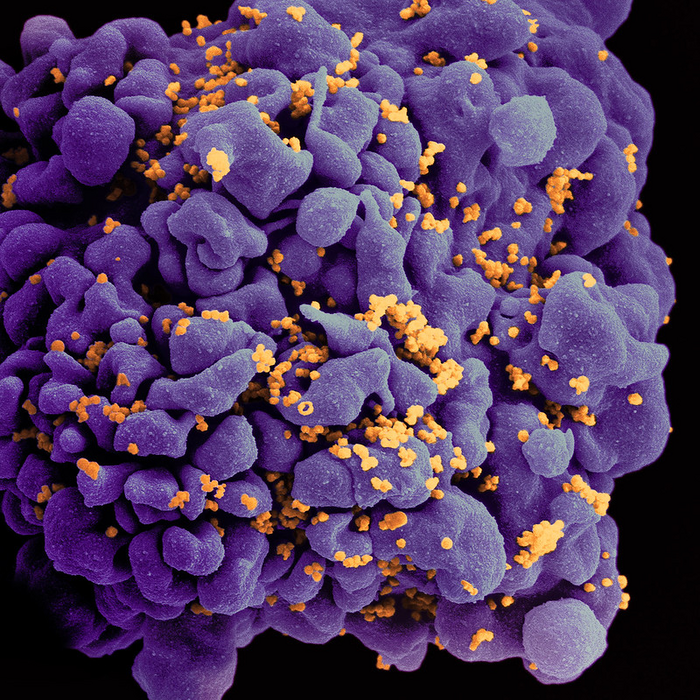WHAT:
In a presentation today at AIDS 2022, the 24th International AIDS Conference in Montreal, scientists with the National Institute of Allergy and Infectious Diseases’ (NIAID) Vaccine Research Center (VRC) and their collaborators described how their use of cutting-edge technology revealed new insights into cellular reservoirs of HIV and what those observations could mean for the next steps in HIV cure research. NIAID is part of the National Institutes of Health.

Credit: NIAID
WHAT:
In a presentation today at AIDS 2022, the 24th International AIDS Conference in Montreal, scientists with the National Institute of Allergy and Infectious Diseases’ (NIAID) Vaccine Research Center (VRC) and their collaborators described how their use of cutting-edge technology revealed new insights into cellular reservoirs of HIV and what those observations could mean for the next steps in HIV cure research. NIAID is part of the National Institutes of Health.
An enhanced understanding of the HIV-infected, memory CD4+ T cells that persist over decades in individuals taking antiretroviral therapy has been a long-time goal of HIV cure researchers. However, technology limitations have made it difficult to isolate or analyze these individual cells in their natural state. As a result, scientists have been unable to determine whether the cells possess distinctive attributes that HIV-cure-directed therapies may exploit.
In the presentation, Eli Boritz, M.D., Ph.D., chief of the Virus Persistence and Dynamics Section in the VRC Laboratory of Immunology, described NIAID’s long-standing collaboration with a bioengineering research group at the University of California, San Francisco. The researchers developed a custom microfluidic sorting technology termed Focused Interrogation of Cells by Nucleic Acid Detection and Sequencing (FIND-Seq). This technology defines gene expression patterns from rare cells harboring latent HIV by generating millions of single-cell reaction containers in the form of water-in-oil emulsions, in which messenger RNA capture and virus DNA detection can be performed sequentially while maintaining segregation among cells. The scientists applied the FIND-Seq technology to blood cells from six people with HIV who had begun taking ART while chronically infected and who had experienced more than one year of viral suppression. Using data produced by FIND-Seq, the scientists compared the gene expression patterns of HIV-infected memory CD4+ T cells to those of HIV-uninfected memory CD4+ T cells in the same individuals.
The researchers found clear differences between the HIV-infected CD4+ T cells and their uninfected counterparts, including gene expression patterns linked to the suppression of multiple steps in the HIV lifecycle and to cell survival and proliferation. According to the scientists, these results indicate that the HIV-infected memory CD4+ T-cell reservoir is a distinctive cell population that may be uniquely susceptible to specific targeted therapies. In this regard, the study reinforces recent interest among scientists in improving upon HIV cure strategies that are based on latency reversal by incorporating drugs that relieve blocks at multiple HIV lifecycle steps, and by combining these with agents that potentiate physiologic cell death.
ABSTRACT TITLE:
Transcriptional Programs of HIV Silencing and Cell Survival in HIV-Infected Memory CD4 T Cells Under Antiretroviral Therapy.
WHO:
Dr. Boritz is available to speak about the research presented at the AIDS 2022 meeting today.
CONTACT:
To schedule interviews, please contact NIAID News Office, (301) 402-1663, [email protected].
NIAID conducts and supports research—at NIH, throughout the United States, and worldwide—to study the causes of infectious and immune-mediated diseases, and to develop better means of preventing, diagnosing and treating these illnesses. News releases, fact sheets and other NIAID-related materials are available on the NIAID website.
About the National Institutes of Health (NIH): NIH, the nation’s medical research agency, includes 27 Institutes and Centers and is a component of the U.S. Department of Health and Human Services. NIH is the primary federal agency conducting and supporting basic, clinical, and translational medical research, and is investigating the causes, treatments, and cures for both common and rare diseases. For more information about NIH and its programs, visit https://www.nih.gov/.
NIH…Turning Discovery Into Health®




